How to Caulk Between Baseboard and Floor? – 6 Steps
When the baseboard’s substance is readily brittle and fractures when air and moisture pass through it, it won’t last long. Those small mishaps can have a significant impact on a house over time. You will ... Read more The post How to Caulk Between Baseboard and Floor? – 6 Steps appeared first on Arthitectural.
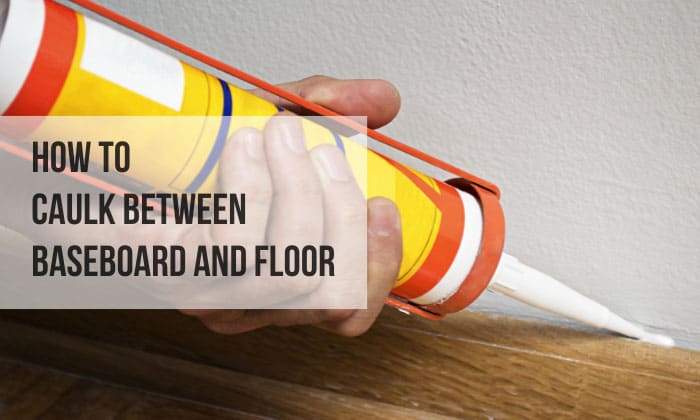

When the baseboard’s substance is readily brittle and fractures when air and moisture pass through it, it won’t last long. Those small mishaps can have a significant impact on a house over time.
You will undoubtedly have inquiries if you are new to home remodeling. What is this gap between baseboard and floor? Should I seal it or leave it?
Well, you definitely must caulk baseboards to floor. It will also deter insects from residing in these crevices, preventing moisture damage and keeping the house looking more furnished. Read here to learn how to caulk between baseboard and floor.
Steps to Caulk Between Baseboard and Floor
Caulking helps you seal the leaking spots or gaps in the floors. It may not structurally seal gaps like adhesives, but it will help in protecting both the baseboards and floor.
Things You’ll Need
Since caulking baseboards to floor requires both time and effort, it is better to prepare all the necessary tools for a smooth DIY task.
- Knee pads
- Old paint brush
- Putty knife
- Mild detergent
- Bucket of warm water
- Painter’s tape
- Paintable caulk
- Caulk gun
- Clean, dry rugs
- Paint
Step 1: Wear Your Knee Pad
The first step is to wear some protective measures before caulking. Knee pads will allow you to work until you finish without getting hurt and having scrapes on the knees.
Step 2: Clean the Gap
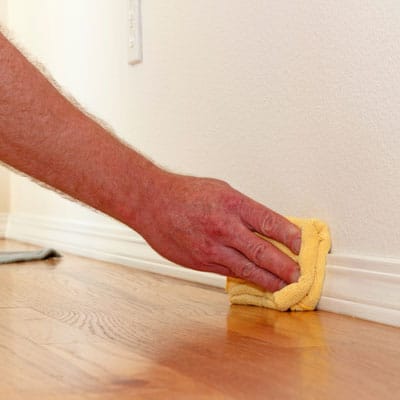
Caulk will adhere better and last longer to a clean surface before being applied than if it is smeared on. Make sure it is spotless and free of debris.
Use an old brush to clean these corners as there may be dust, pet hair, small toys, or something undesirable hidden here for a long time.
Make sure you brush the baseboard corners gently and with care.
The best thing you can do when dried paints and stubborn dirt are present is to use a putty knife. Then, use warm water and mild detergent to clean the area if there is any remaining debris. Allow it to dry after that.
Step 3: Protect It Using Painter’s Tape
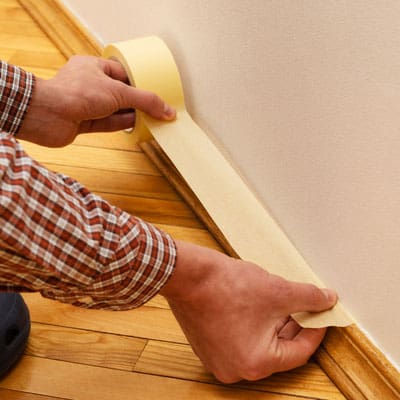
Before filling the gap between hardwood floor and baseboard, you must protect the floor and the baseboard.
Using tape isn’t really necessary, but it will help you in outlining where to caulk for flooring. It eventually all comes down to the baseboard you have installed in your walls. Using tape is not required, just like if your baseboards are stain-resistant.
You must place painter’s tape 1/8 inch away from the base once you’ve decided to use it. Run it parallel to the baseboards on the floor. This will enable you to complete the task with high quality. Aside from that, the tape can catch the excess caulk once you caulk bottom of baseboards.
Step 4: Caulk it up!
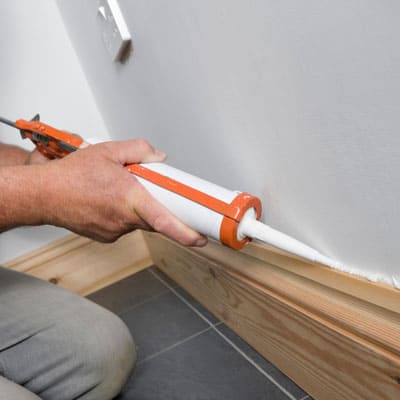
Once everything is ready, it is time to seal space between baseboard and floor.
- Mount the paintable caulk to the caulk gun.
- Start in the corner and gently press the gun while caulking trim gaps. Be careful not to squeeze so much on the corner, as it will only create a mess. In doing so, you should be moving and pressing the gun at the same time. Run it until it reaches the middle.
- Then, go to the opposite side and repeat the same process above.
- Once it meets in the middle and the gap is full, you can dip your finger in water and gently run it on the applied caulk to smoothen it.
- If gaps are found or even small holes, fill them with the caulk gun.
- Then, clean it again by smoothening it with your wet fingers.
- If the caulk is already set, you can now carefully remove the tape. Do not wait for the caulk to dry since it will be harder for you to remove the tape.
Take note that if you want to fill large gap, you may want to slow down until you fill it with caulk.
Step 5 Let it dry
Let the caulk dry and be completely set on the gaps after removing the tape. Check it after it has dried to see if any tiny holes require caulking. Spot fix any gaps smaller than a pinhole that you find. Once more, let it air dry.
Step 6 Paint the caulk
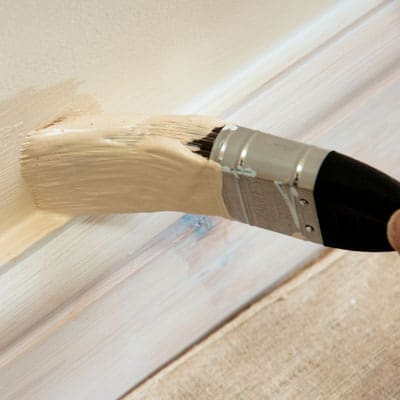
Leaving the caulk unpainted will only draw dirt and leave an unsightly view. So, make sure you decide on a paint color that matches the baseboards in your room and cover the caulk.
- Reapply tapes to the floor before painting. Another option is to spread an old rug across the floor. In this manner, any paint that may have been smeared won’t end up on the ground or the remaining baseboard.
- Then, take the paint and color the caulk that has dried.
What Causes Gap Between Floor and Baseboard?
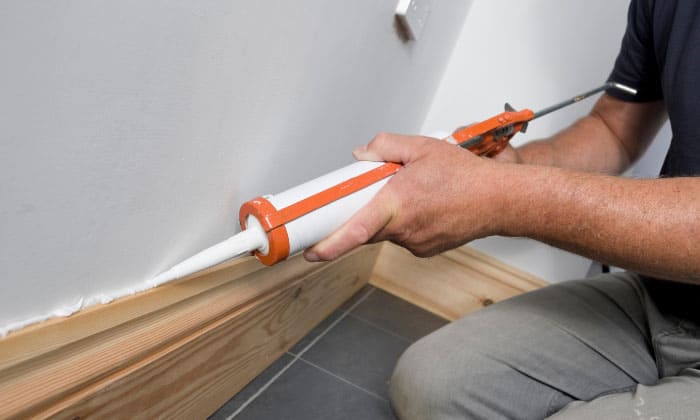
Many times, you have probably noticed gaps between the baseboards and the floor. It is neither unusual nor something that a house ought to have. Having this gap, though, might make your house appear incomplete and disorganized. Additionally, it may serve as a pest’s home.
There are many reasons why there can be a gap between baseboard and laminate floor. Some of these are the following:
- The contractor lacks sufficient experience. Consequently, the result could be better, and the level of quality could be more acceptable.
- The baseboard may have a gap if it is cut unevenly. In this situation, one portion may be wider than the other.
- A carpet was placed during the installation of the baseboards. That is why there are gaps now when the carpet was removed.
- If the house is old, the floor might be sagging. This circumstance is not unusual; rather, it frequently occurs in some places.
Conclusion
Here end the suggestions on how to caulk between baseboard and floor. If you just installed baseboards and saw a gap, follow the steps in this article. Doing the steps mentioned above will help you achieve a neat and furnished look for your home.
So what are you waiting for? Caulk it and paint it.
The post How to Caulk Between Baseboard and Floor? – 6 Steps appeared first on Arthitectural.
